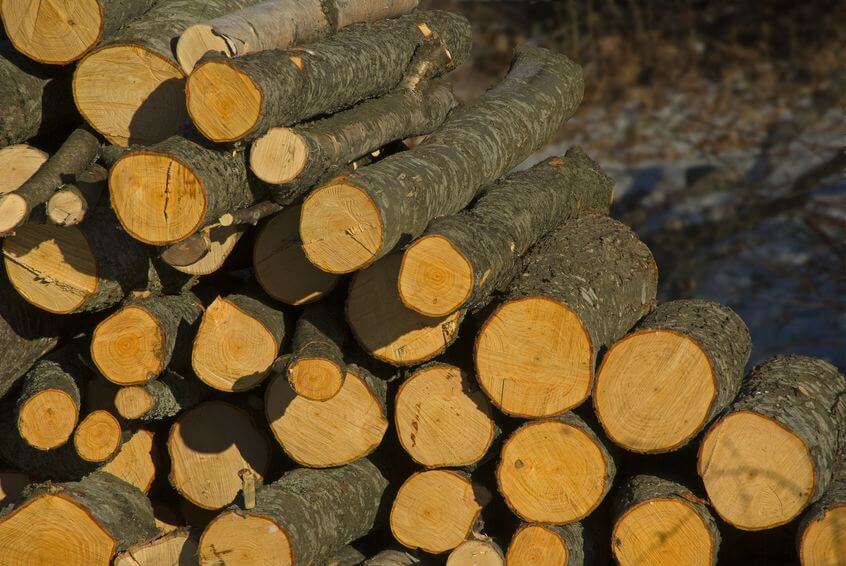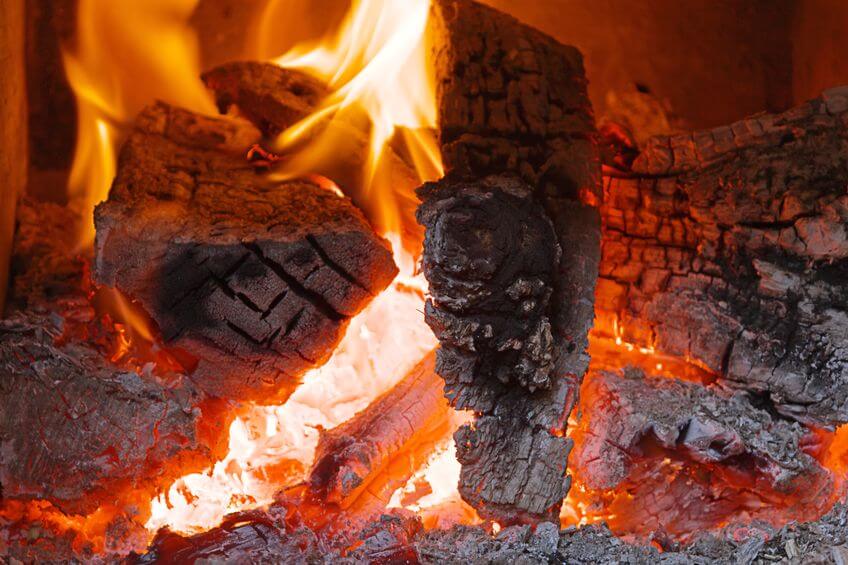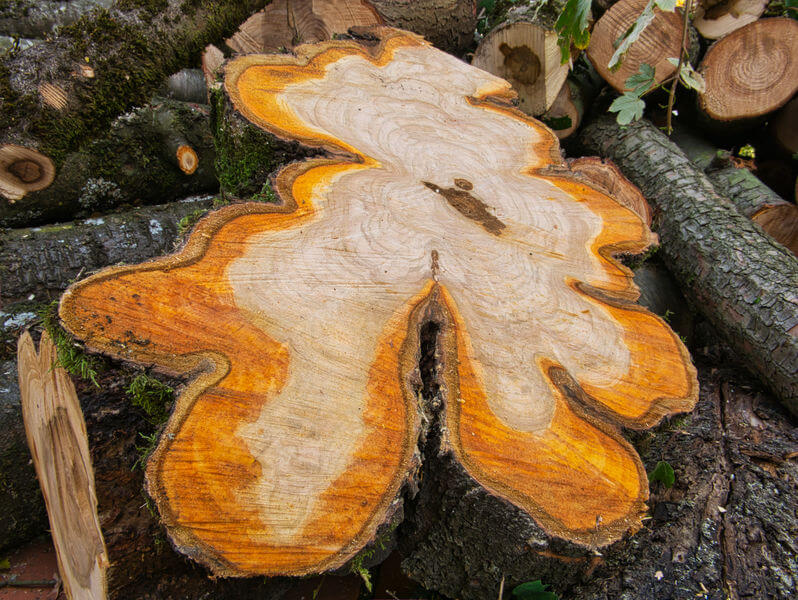- Home
- Firewood Types
- Cherry Firewood
Cherry Firewood
This post may contain affiliate links so I earn a commission.
Cherry firewood is a popular choice for many homeowners.
Although not as popular as oak, maple and beech, cherry can provide sufficient heat for your entire home.
The black cherry (also referred to as wild cherry) is a common tree found throughout the eastern and central United States.
The cherry tree is known for its beautiful white fragrant blooms in the spring followed by large amounts of red berries that eventually ripen to a darker color.
The berries begin to grow in the spring and are hard and bitter at first.
As they ripen the berries turn to a dark color and begin to soften and become sweeter.
 Cherry Logs
Cherry LogsThese berries are edible by humans but many still describe the flavor as bitter.
The fruit of the black cherry is eaten by birds and other wildlife.
The seeds are then spread throughout the forest allowing the cherry tree to spread rapidly.
The cherry tree is known for producing exceptional lumber.
The wood is used to make furniture, flooring and cabinets.
The wood fiber has a reddish hue on the inside and also has a pleasant fragrance.
The bark of a young cherry tree is smooth.
As the tree matures, the bark turns to a distinctive scaly texture which is usually the easiest way to identify a mature cherry tree.
An adult cherry tree can grow up to 80 feet tall.
Splitting And Drying Cherry Firewood
Although cherry may be a moderate heat producer the wood is very user friendly because it splits really easy and it dries faster than other hardwoods.
I love to split cherry because the color of the wood is so unique.
Plus, it's just a pleasure to split because you can usually split a round with one strike using a splitting axe or maul.
While oak can take up to 2 full years to fully season, cherry only takes about 6-12 months depending on how, and where it's stored.
This is very beneficial for those who heat with firewood throughout the winter because you can cut cherry in the early spring and it will be dry enough to burn in the winter.

For best results, stack cherry in rows in a sunny location which are elevated off the ground.
You can elevate the wood on pallets, 2x4's or a firewood rack.
Elevating the wood has multiple benefits.
First, it keeps ground moisture from soaking into the bottom portion of the firewood stack and it also allows the wind to blow around the stack, drying out the wood faster.
The outer layers of cherry firewood will start to deteriorate and become punky if the wood stays wet, so a dry location for cherry is important if you plan on storing the wood for several years.
Also, if you don't have access to a covered firewood shed, use a tarp to cover the top 1/3 of the firewood stack.
This helps repel rain and snow, while still allowing the wood to breathe and dry out.
Firewood Usage
Cherry will produce 20.0 million BTU's per cord which isn't the best when you compare it to oak or hard maple, but it's really not all that bad either when you compare it to a softwood like pine.
The firewood is known for its pleasant aroma when burned making it a popular choice for a fireplace or campfire.
I love the smell of cherry in a fireplace.
It has a smell that just can't be recreated by other common hardwoods.
Cherry does seem to spark more than other hardwoods which could lead to some concerns when burned in an open fireplace.
If you're worried about the sparks, just use a fireplace screen to prevent the sparks from escaping.
 Cherry Firewood
Cherry FirewoodDue to it's unique aroma it's a pretty versatile wood.
Those who enjoy smoking meat or fish in a smoker are very familiar with how well cherry works.
It has a sweet mild flavor that goes well with just about any type of meat.
Cherry firewood has decent coaling qualities and doesn't give off a lot of smoke, so it's great for using in a campfire because it won't smoke you out.
I like to use cherry firewood to start a morning fire because it lights really easy creating a quick, hot fire.
Creating a hot fire that doesn't smoke or smolder is a lot safer because it not only burns cleaner, but it heats up the chimney walls which reduces the chances of any unburned gasses from sticking to them, causing creosote.
While it may not be the top choice in the firewood rankings, cherry can supply you with a beautiful, warm fire that also smells terrific.

About the Author
Obsessed with firewood, Nick is behind over 350+ of Firewood For Life's articles, as well as countless reviews, guides and YouTube videos to help readers like you reduce heating costs and create the perfect fire.


